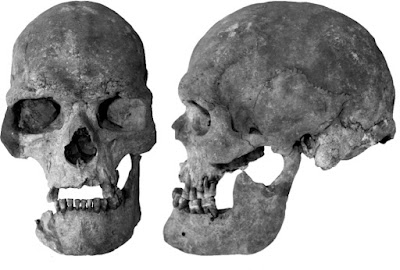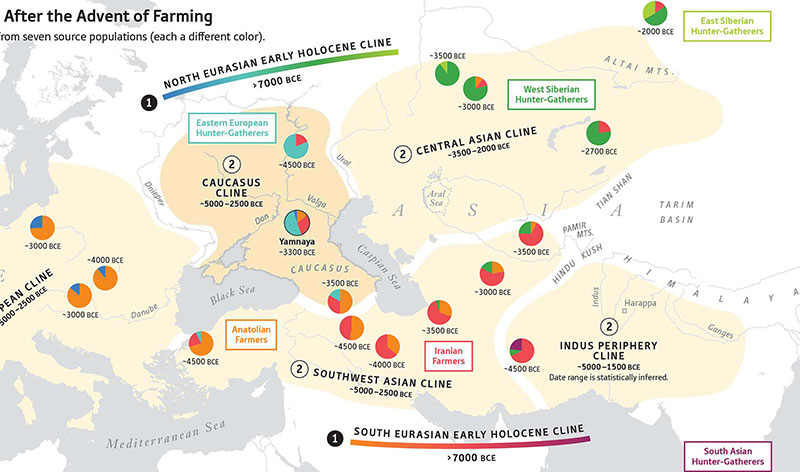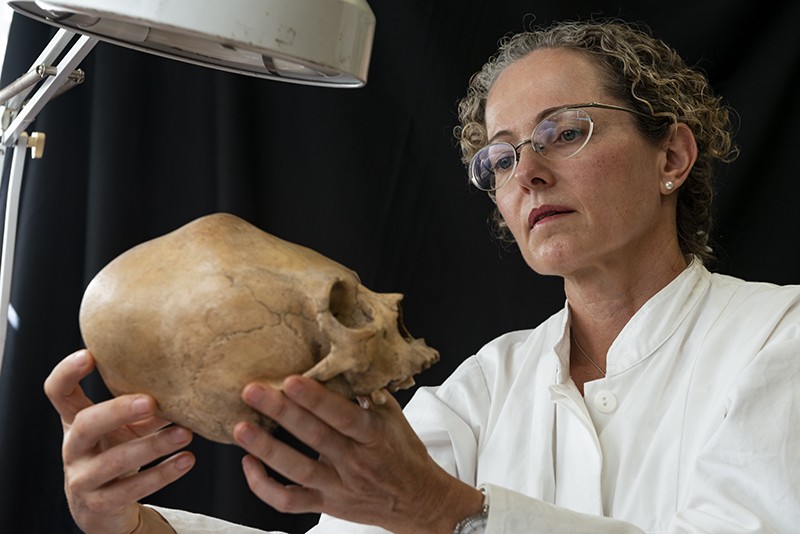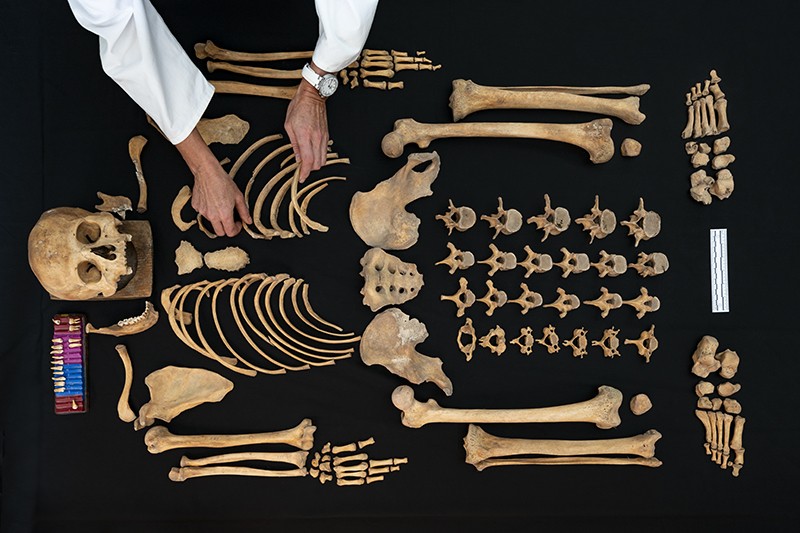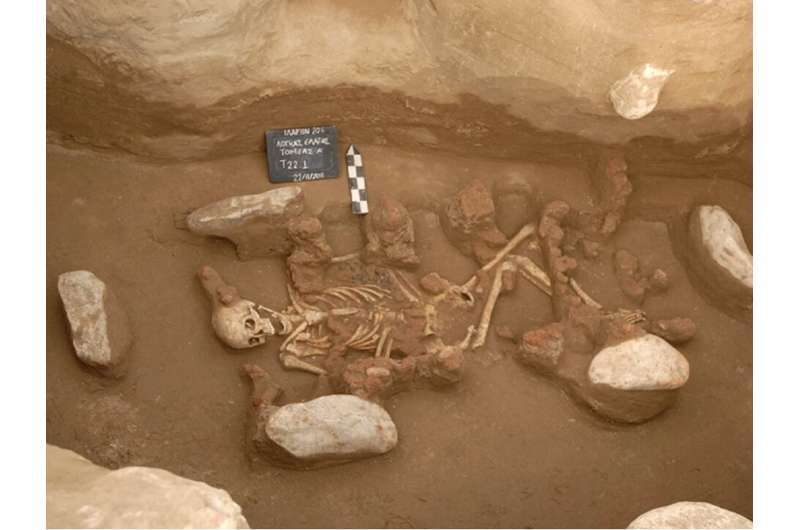Modern Greek skulls are shifted to Cromagnon, due to Helladic-Logkas-MBA?
LBA Myceneans: Armenia versus Steppe-like gene flow
Skeleton of one of the two individuals who lived in the middle of the Bronze
https://phys.org/news/2021-05-ancient-dna-reveals-bronze-age.html
["The last phase of the BA is associated with a Late Helladic cul-
ture termed Mycenaean. Around 1,200 BCE, the Mycenaean
civilization began to decline, the palaces were destroyed, the
system of writing (Linear B) was abandoned, and their arts and
crafts ceased. The causes of their decline are disputed (e.g., cli-
matic change, invasions) (Middleton, 2020). Lazaridis et al.
(2017) showed that Mycenaeans were quite distinct from pre-
sent-day populations, but it remained unclear how they relate
to EBA populations.
Despite cultural similarity with the Helladic-Logkas-MBA
individuals, analyses suggest that the Mycenaean-Peloponn-
ese-LBA were quite distinct genetically, occupying a position in-
between the Logkas and the EBA Aegean and the Minoan-Lasithi-
MBA in MDS (Figure 2). Unlike the Logkas individuals, they carry a
lower European-HG-like component in ADMIXTURE (Figure 3)
and do not share significantly more alleles with Iran_N/CHG or
EHG compared to Anatolia_N in the D-statistics (Figure S6). How-
ever, like the Helladic-Logkas-MBA, they share more alleles with
Steppe_EMBA. Mycenaean-Peloponnese-LBA had previously
been shown to be consistent with a qpWave/qpAdm model that
either involved BA Steppe- or Armenian-related populations (Laz-
aridis et al., 2017). We recapitulated this result and we additionaly
found that Mycenaean-Peloponnese-LBA data are also consisent
with a model involving an EBA Aegean and Anatolia_N as source
populations (Table 3). In contrast, the Helladic-Logkas-MBA
require a Steppe-like source and cannot be explained with a sim-
ple model involving an Armenian-like source (Tables 3, S3,
and S5)."]
["our results reveal that
present-day individuals fromGreece (northern Greece—Thessaloniki—and Crete) are closely
related to the Helladic-Logkas-MBA individuals of northern
Greece, falling near present-day Greeks in MDS analysis (Fig-
ure 2), sharing the same ancestry components in ADMIXTURE
(Figure 3), and having very similar D-statistics (Figure S6)"]
https://www.sciencedirect.com/science/article/pii/S0092867421003706 (2021)
["The Griffin Warrior (8), the earliest individual (~1450 BCE) from the Palace of Nestor in Pylos, is genetically right in the middle of the general population of the Aegean and was thus plausibly of entirely local Aegean origin. He had no detectable Eastern European hunter-gatherer ancestry (compared with the average of 4.8 ± 1.1% for the rest of the Mycenaean-era individuals sampled at the Palace; Fig. 1H). This finding could be consistent with a Cretan origin of this individual or his ancestors; alternatively, he could be drawn from a mainland population that had not experienced Eastern European hunter-gatherer admixture, as could two later individuals from Pylos—one buried near the Palace in a chamber tomb and another in a cist grave. Variation in Eastern European hunter-gatherer ancestry is observed at short geographical distance scales and within the same time periods: We observe that four individuals (~1450 BCE) of the sample from Attica buried at Kolikrepi-Spata had only 2 ± 1% Eastern European hunter-gatherer ancestry that was significantly less (by more than two standard errors) than that of individuals from the neighboring island of Salamis and all sampling locations in the Peloponnese. This suggests that the classical Athenian claim (e.g., Plat. Menex. 237b) of having received fewer migrants than other Greek poleis in the remote past may have had an element of truth, although larger sample sizes will be necessary to definitively establish such geographic patterns."]
https://www.science.org/doi/10.1126/science.abq0755 (2022)


